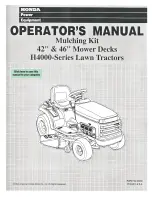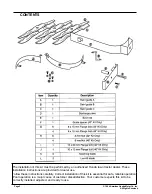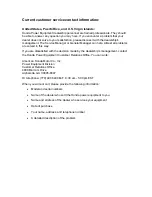
OPERATING INSTRUCTIONS
OPERATING INSTRUCTIONS
Grass Cutting Basics
Cutting Height
A cutting height setting of 1
1
/
2
or
2
inches is
appropriate for most lawns during cool
weather. A higher cut may be needed to
protect the lawn during hot summer months.
Consult a local nursery or lawn and garden
center for advice about specific types of
grasses and growing conditions in your area.
Most grasses should be cut when they have
grown
1
/
2
to 1 inch above the recommended
height. If your grass gets too tall, cut it back
a little at a time, allowing a few days for the
grass to recover between mowings. Avoid
cutting more than one third of total grass
height in any one mowing. For best mulching
results, mow the lawn frequently enough that
you will need to cut
off
less than one inch.
Frequent mowing, with light cuts, makes it
easier for your mulching mower to turn grass
clippings into fine particles that will fall
through the turf and decompose quickly.
Cutting Width
For an even lawn finish, overlap each
mowing swath by a few inches. If the grass
is very tall or thick, use more overlap and a
narrower mowing swath. If clogging or
clumping occurs, you may also need
to
mow
more slowly or raise the cutting height
setting.
Blade Speed
For best performance, the blades must spin
very fast. Always use the fast throttle setting,
and keep the engine running at or near
maximum rpm. If you hear the engine speed
decrease, mow more slowly, cut a narrower
swath, or raise the cutting height setting.
Blade Sharpness
Keep the blades sharp. Sharp blades cut
cleanly. Dull blades tear the grass, leaving
shredded ends that turn brown.
Moisture
Always wait for wet grass to dry. Wet grass
clippings will clog the mower deck and
collect in clumps on the lawn. If the soil is
very dry, mowing can stir up a
lot
of
dust.
Besides being unpleasant to work in, too
much dust will clog the carburetor air filter. If
dust is a problem, water your lawn the day
Page
6
before mowing. Mow when the grass dries,
and the soil is still moist.
Mulching
Mulching cuts grass clippings and fallen
leaves into fine particles that fall through the
turf and decompose quickly. This returns
nutrients to the soil and reduces the need for
raking, bagging, and disposal. For best
mulching results, mow the lawn frequently,,
cutting
off
less than one inch of grass each
time. In growing season,
you will probably
need to mow the lawn twice a week. Heavy
layers
of
leaves may be difficult to mulch.
This mulching kit closes the discharge port in
the mower deck which recirculates grass
clippings through the special mulching
blades. Periodically cleaning the
accumulated grass clippings from the mower
deck and tractor before using will help
promote clipping recirculation.
Side-Discharge Mowing
Side-discharge mowing should be
considered where grass has grown too tall to
mulch easily. Side-discharge mowing will
leave grass clippings on top of the mowed
areas and-may need to be removed by
raking. Heavy clumps of clippings should
always be removed; grass must remain
uncovered to grow properly.
For side-discharge mowing, you must
remove the Discharge Plate and Swirl Guide
C. It is not necessary to remove the other
swirl guides.
©1994 American Honda Motor Co., Inc.
All Rights Reserved




























